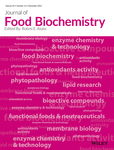Anti-diabetic effect of hydroxybenzoic acid derivatives in free fatty acid-induced HepG2 cells via miR-1271/IRS1/PI3K/AKT/FOXO1 pathway
Funding information
This research was supported by the Rural Development Administration (grant number: PJ01415004)
Abstract
Type 2 diabetes is characterized by insulin resistance (IR) and increased hepatic glucose production. MicroRNAs (miRs) are considered regulators of glucose metabolism. This study evaluated anti-diabetic activity of hydroxybenzoic acid derivatives and determined the involvement of miR-1271. Among the hydroxybenzoic acid derivatives, gallic acid (GA) showed the best anti-diabetic activity. GA improved free fatty acid (FFA)-induced hepatic IR, increased glucose consumption, and decreased reactive oxygen species. GA inhibited the upregulation of miR-1271 induced by FFA and upregulated its targets such as p-IRS, p-PI3K, p-AKT, and p-FOXO1, accompanied by the regulation of glucose metabolism genes. The involvement of miR-1271 in the protective effect of GA against IR was further confirmed in the presence of miR-1271 mimic or miR-1271 inhibitor. Our results suggest that GA attenuates IR via the miR-1271/IRS/PI3K/AKT/FOXO1 pathway and thus might be considered for the management of IR.
Practical applications
MicroRNAs can regulate insulin resistance by affecting protein expressions involved in insulin signaling. Experimental data suggest that some phytochemicals regulate the expression of various microRNAs. However, it is not clear whether phenolic acids play any role in the hepatic insulin signaling pathway through the regulation of microRNA expression. This study assessed the anti-diabetic activity of hydroxybenzoic acid derivatives through down-regulation of microRNA-1271 and its association with the IRS1/PI3K/AKT/FOXO1 pathways. This research will be able to offer basic information regarding a potential therapeutic strategy to control hepatic insulin resistance.
CONFLICT OF INTEREST
The authors declared that they have no conflict of interest.
Open Research
DATA AVAILABILITY STATEMENT
All data used to support the findings of this study are included within the article and its supporting information.




